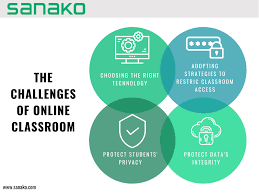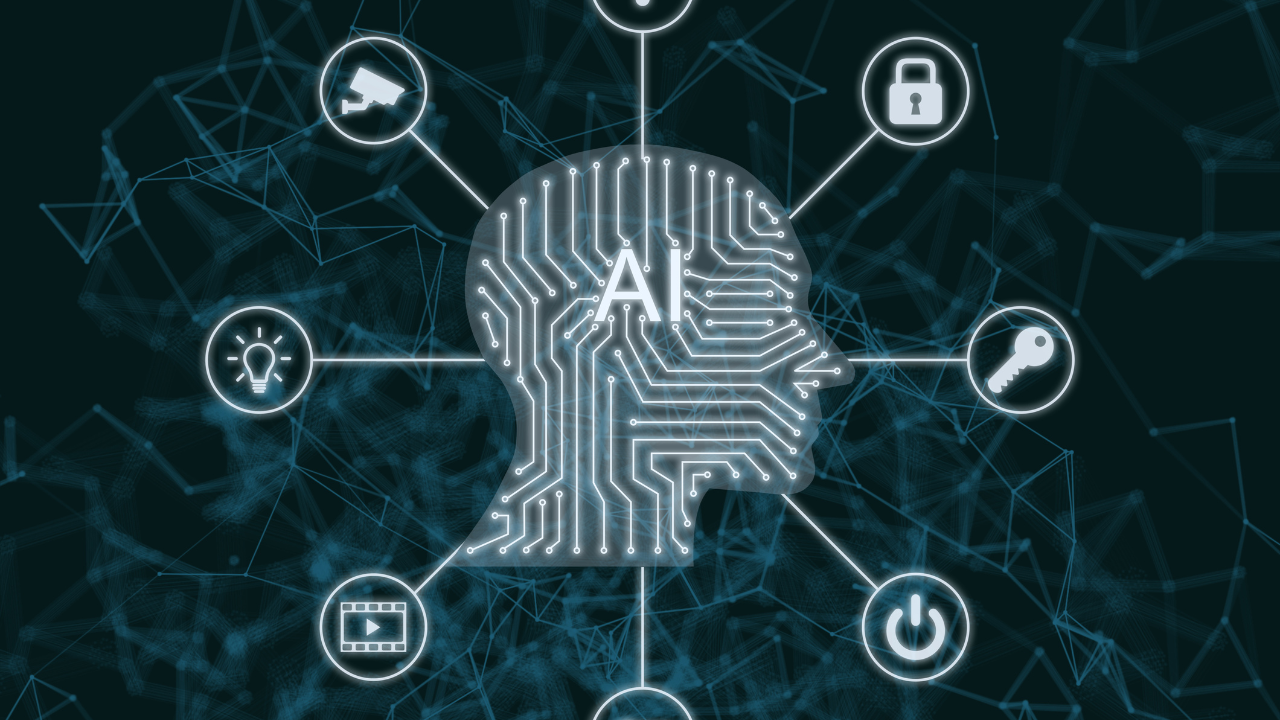



Cybersecurity for Online Exams and Virtual Classrooms
As education continues to evolve, online exams and virtual classrooms have become commonplace in schools, universities, and training programs worldwide. While these innovations offer convenience and accessibility, they also bring new challenges, especially regarding cybersecurity. Ensuring the security of online exams and virtual learning environments is crucial to protect the integrity of the learning process, prevent cheating, and safeguard sensitive student data. Here’s a breakdown of the key cybersecurity considerations for online exams and virtual classrooms.
Online exams and virtual classrooms often involve the exchange of sensitive information, such as personal student data, exam results, and potentially even financial details (for tuition or payment purposes). Ensuring that this data is protected from cyber threats is paramount. Additionally, preventing cheating and preserving academic integrity are major concerns for educators and institutions in the digital space.
a. Data Breaches: Student data, including grades, personal information, and attendance records, is stored online. If institutions fail to secure this data, it could be exposed during a cyberattack. Data breaches are a significant risk, especially if the learning platform doesn't have adequate protection for sensitive student information.
b. Cheating and Academic Dishonesty: In an online exam environment, cheating can be more challenging to prevent. Students may use unauthorized materials or collaborate with others during exams. Some may even attempt to hack the system to view or alter exam answers.
c. Phishing Attacks: Phishing attacks target students and educators with fraudulent emails or messages that try to trick them into revealing sensitive information, such as login credentials. Attackers may impersonate school administrators or exam systems to gain unauthorized access.
d. Unauthorized Access: Without proper access controls, unauthorized users could gain access to virtual classrooms or online exams. This could allow them to participate in exams they are not enrolled in, steal answers, or disrupt the exam process.
e. Distributed Denial of Service (DDoS) Attacks: A DDoS attack occurs when an attacker floods a server with traffic to overwhelm it and make it unavailable. If a virtual classroom platform or exam portal is targeted, it could prevent students from accessing their exams or participating in the class.
a. Strong Authentication and Access Control: To protect online exams and virtual classrooms from unauthorized access, institutions should implement multi-factor authentication (MFA). MFA requires users (students, instructors, and administrators) to verify their identity using multiple methods, such as a password and a one-time passcode sent to their phone.
b. Secure Communication: All communication in virtual classrooms (e.g., video lectures, chat messages, assignments) should be encrypted. End-to-end encryption ensures that any information exchanged during lessons or exams cannot be intercepted or read by unauthorized parties. Platforms that offer encrypted communications (e.g., Zoom, Microsoft Teams) are crucial for maintaining privacy.
c. Exam Monitoring and Proctoring Tools: To prevent cheating, online exam platforms often use monitoring tools like AI-powered proctoring, which can detect suspicious behavior such as eye movement, the presence of additional people in the room, or the use of unauthorized devices. Additionally, webcam monitoring and screen recording may be implemented to monitor students during exams.
d. Secure Exam Platforms: The platforms used to administer online exams should be secure, with built-in protections like question randomization (to prevent students from seeing the same questions in the same order) and time limits (to discourage looking up answers). Using trusted exam software, such as ProctorU or Examity, can help ensure that these measures are in place.
e. Anti-Cheating Measures: Exam systems can implement a variety of anti-cheating strategies, such as:
Question Pools: Randomizing questions from a large pool to ensure that no two students receive the same set of questions.
Time Constraints: Limiting the amount of time available for each question or the entire exam to prevent students from looking up answers.
Browser Locking: Disabling access to other websites or applications during the exam to prevent students from searching for answers.
f. Data Encryption and Storage: All sensitive student data, including grades and personal information, should be encrypted both at rest (when stored) and in transit (while being transferred between systems). This ensures that even if data is intercepted, it remains unreadable to attackers.
g. Regular Security Audits and Vulnerability Testing: Educational institutions should conduct regular security audits of their virtual classroom and exam platforms to identify and fix vulnerabilities. This includes penetration testing to simulate cyberattacks and assess system resilience.
h. Phishing Awareness Training: Phishing attacks are a common threat in online education. To minimize this risk, institutions should educate students and faculty about how to recognize phishing emails and other social engineering attacks. Additionally, it’s important to regularly remind students and staff to be cautious of unsolicited messages asking for login credentials or personal information.
i. Backup Systems and Disaster Recovery: Ensure that all exam data and virtual classroom content are backed up regularly. Having a disaster recovery plan in place is essential for recovering lost data in the event of an attack, system failure, or natural disaster. Cloud-based platforms often provide automated backup options.
For Students:
Use Strong Passwords: Create unique and complex passwords for your exam accounts, and never share them with anyone.
Enable MFA: If possible, enable multi-factor authentication on your student accounts for an added layer of security.
Be Aware of Phishing Attempts: Be cautious of emails or messages that ask for personal information or direct you to unfamiliar websites.
Follow Exam Guidelines: Ensure that you follow the guidelines provided by your institution to avoid any accidental breaches of exam rules, such as cheating or improper use of technology.
For Educators:
Use Secure Platforms: Choose secure virtual classroom platforms with built-in cybersecurity features.
Monitor Exams: Consider using live proctoring or AI-driven monitoring tools to supervise exams and ensure the integrity of the process.
Educate Students About Cybersecurity: Make sure students are aware of the risks of phishing and other cyber threats, and guide them on how to protect their data.
Review Access Control: Limit access to sensitive materials, such as exams and grading systems, to authorized individuals only.
As technology evolves, so does the need for new approaches to cybersecurity in education. Here are a few emerging trends:
Blockchain Technology for Academic Records: Blockchain can provide a secure, transparent way to store academic credentials and exam results, reducing the risk of data manipulation.
Artificial Intelligence (AI) in Fraud Detection: AI-driven tools are being developed to detect fraudulent behavior during exams, such as unusual typing patterns or the presence of unauthorized devices.
Zero Trust Security: Zero Trust models, where all users and devices are treated as untrusted by default, are gaining traction in the education sector to ensure that every access attempt is thoroughly verified.
Cybersecurity is a critical concern for online exams and virtual classrooms, as the digital nature of education creates new opportunities for cyber threats. To ensure the integrity of the learning process and protect student data, institutions must implement a combination of strong access controls, encryption, proctoring tools, and continuous monitoring. By adopting best practices, educating students and educators, and staying vigilant against emerging threats, schools can create a secure online learning environment that fosters academic integrity and protects sensitive information.
#trending #latest

University Internships That Help You Get a Job After Graduation... Read More.

Is It Smarter to Start at a Community College... Read More.
 Fake posts hit Czech PM Fiala's X
Fake posts hit Czech PM Fiala's X
Fake posts disrupt Czech PM Fiala's X account security
 Switzerland Tightens Export Rules
Switzerland Tightens Export Rules
Switzerland expands export controls on dual-use goods
 Google unveils Ironwood AI chip
Google unveils Ironwood AI chip
Google introduces Ironwood chip to accelerate AI tasks & apps
 TSMC Q1 revenue up 42%
TSMC Q1 revenue up 42%
TSMC sees 42% revenue surge in Q1, surpassing forecasts
 Amazon CEO Outlines AI Vision
Amazon CEO Outlines AI Vision
Amazon CEO reveals AI investment plans in new letter
 Osaka Hosts World Expo 2025
Osaka Hosts World Expo 2025
Japan blends tech and culture at Osaka Expo 2025 launch
 A16z Plans Big Bet on AI Startup
A16z Plans Big Bet on AI Startup
A16z may lead huge round in ex-OpenAI CTO’s new AI firm.
© MyEduGoal. All Rights Reserved. Design by markaziasolutions.com